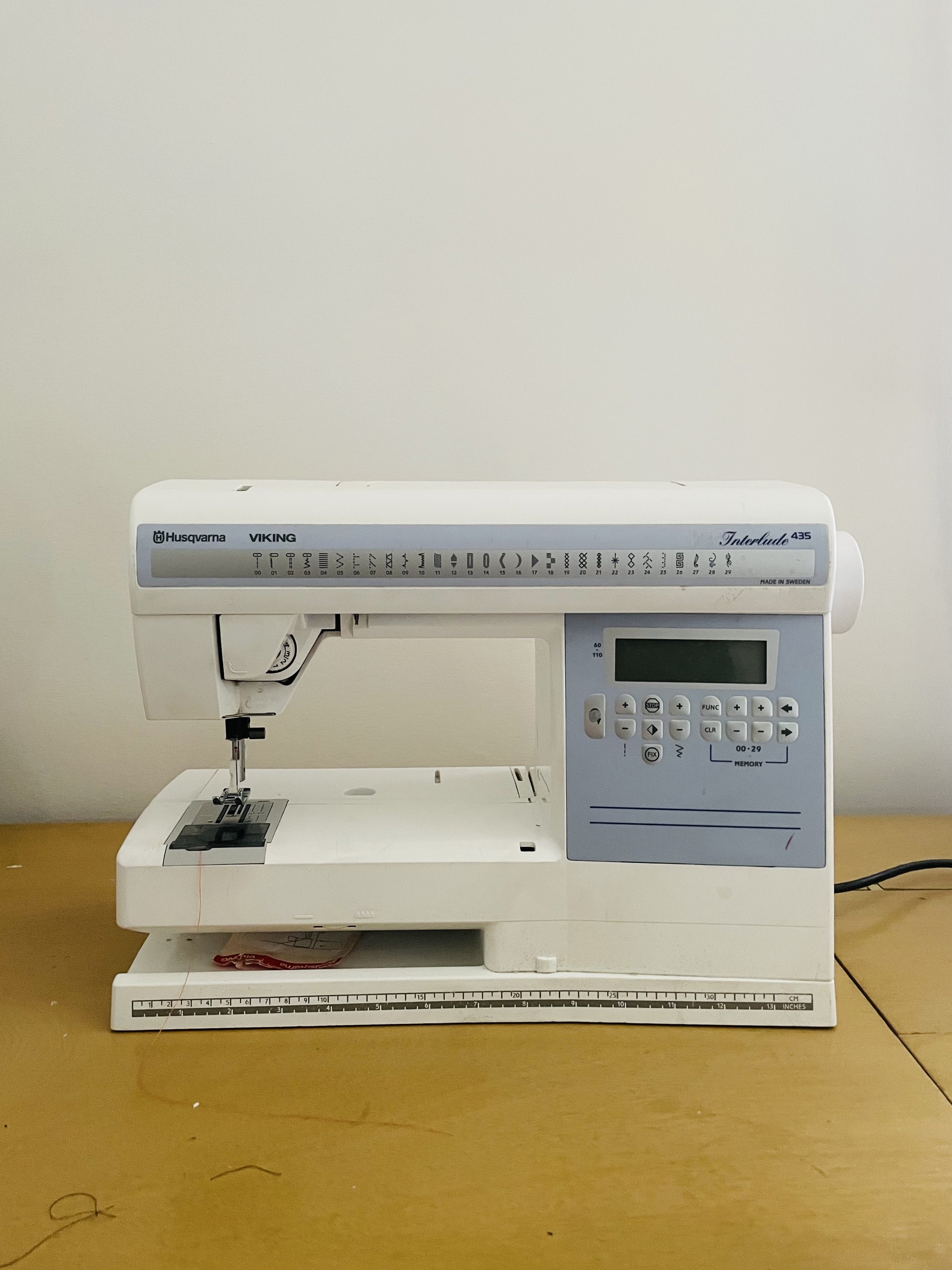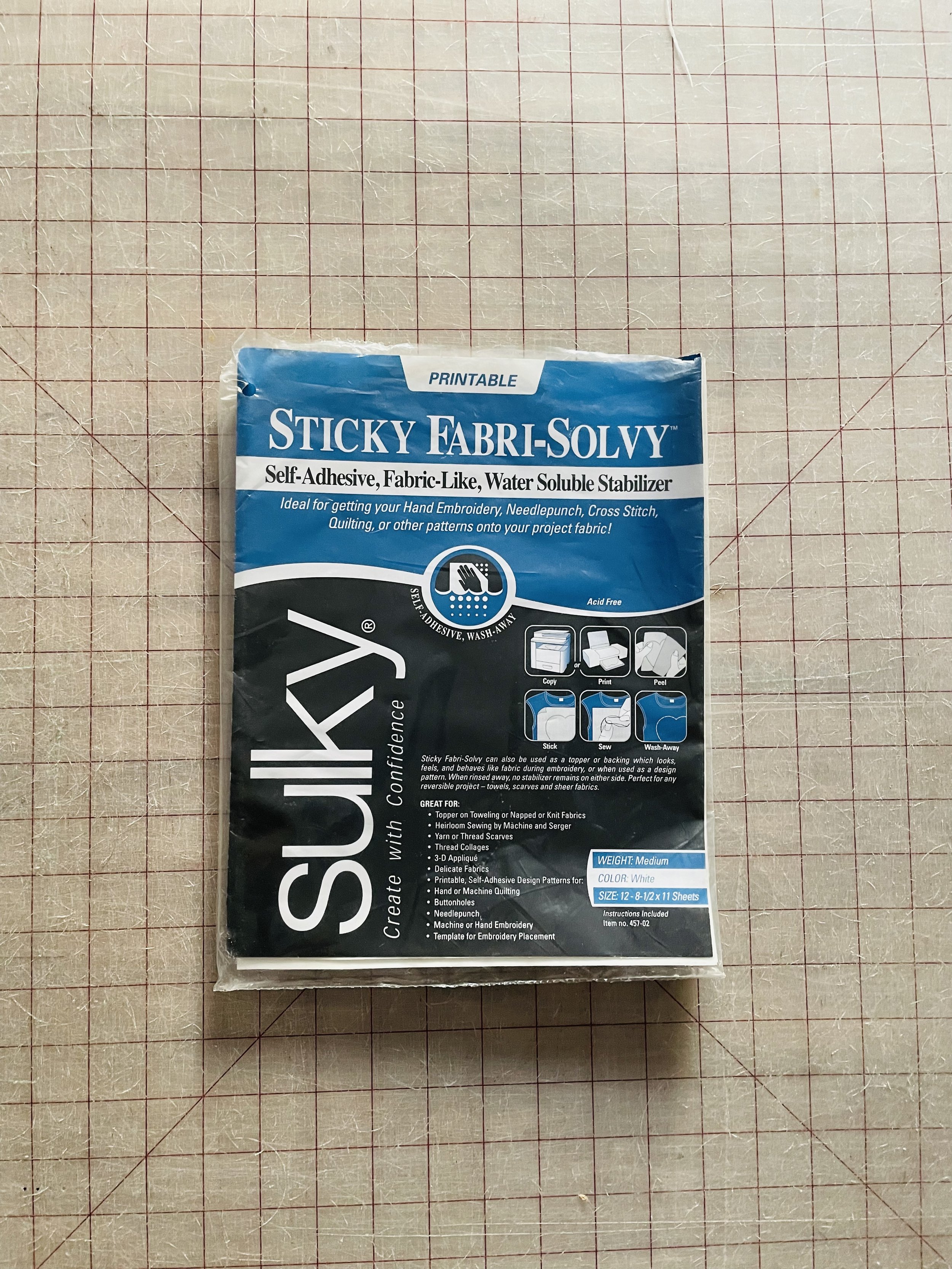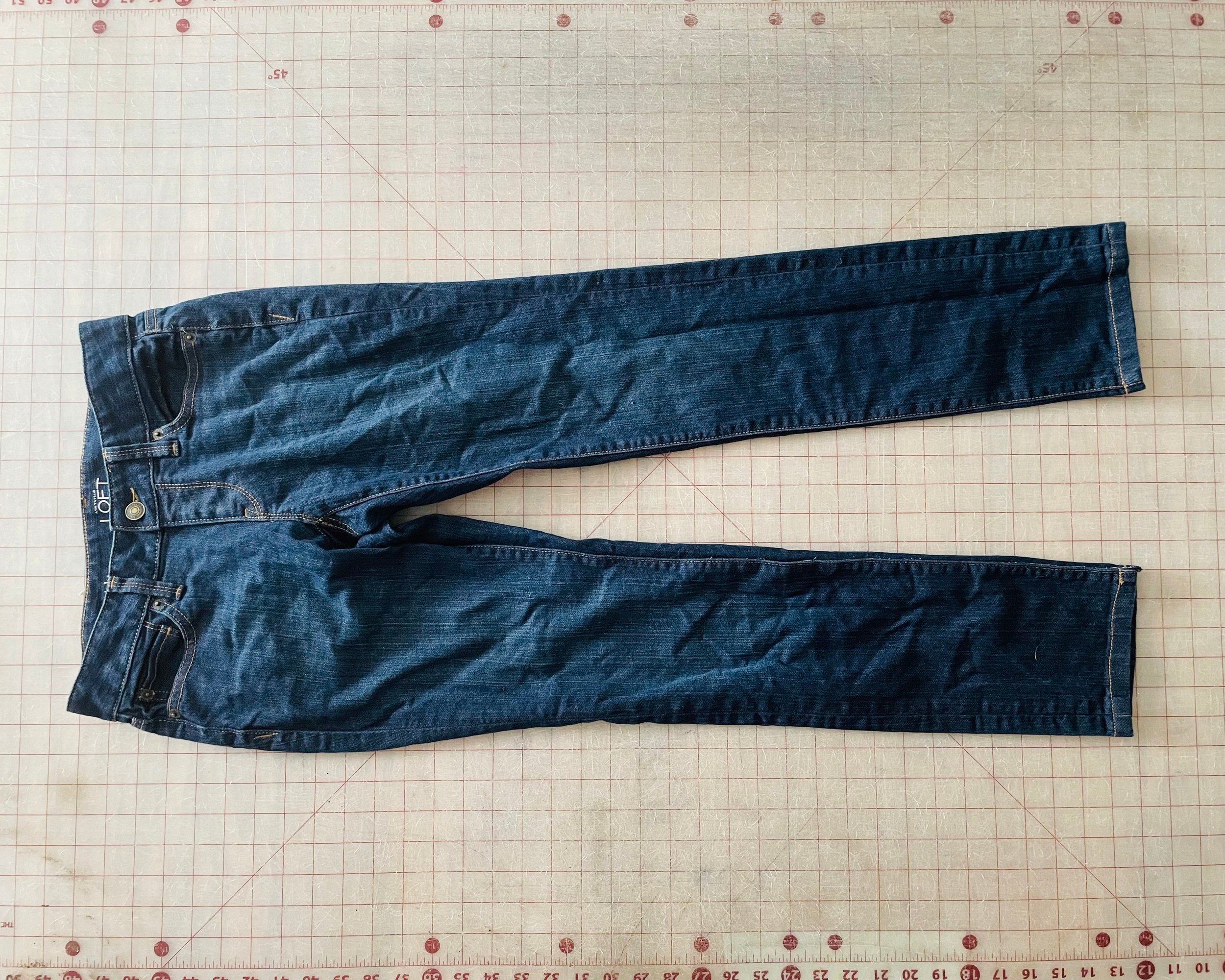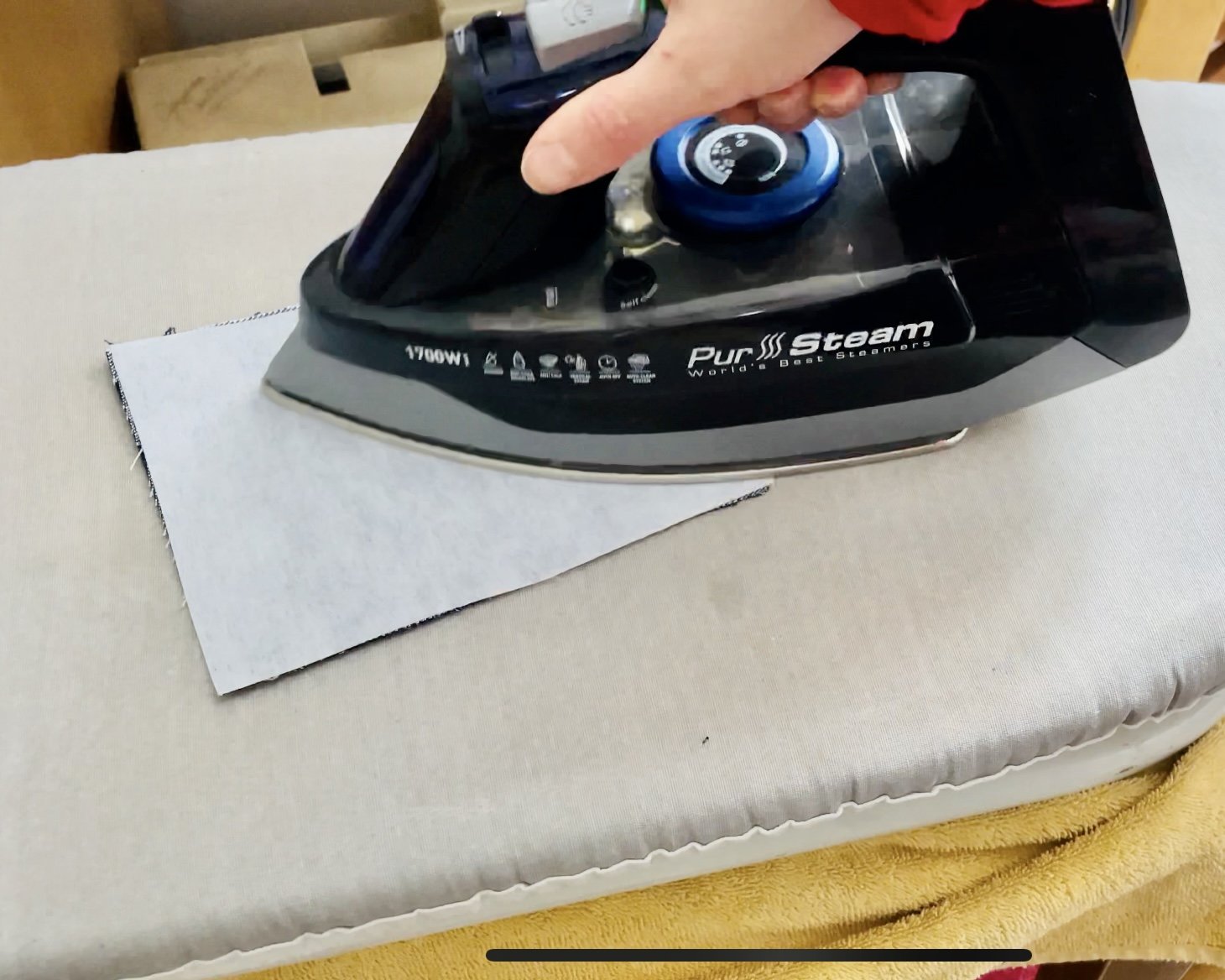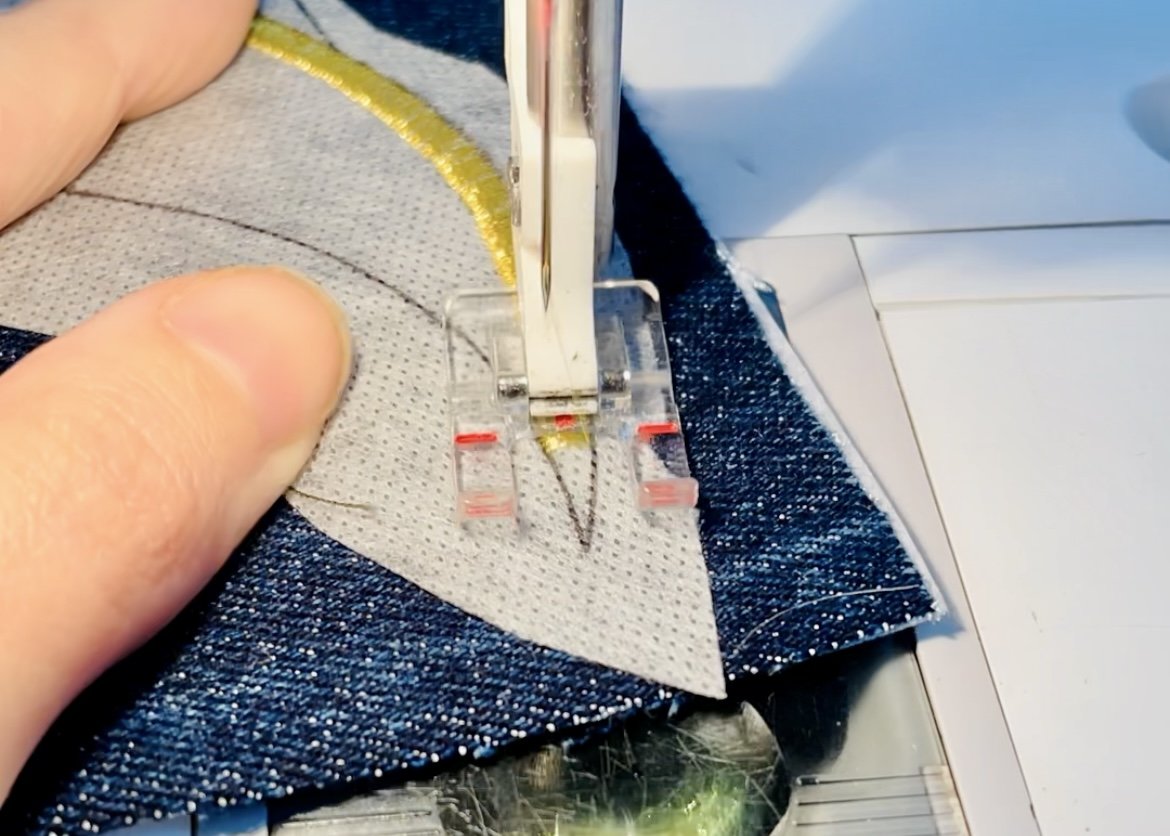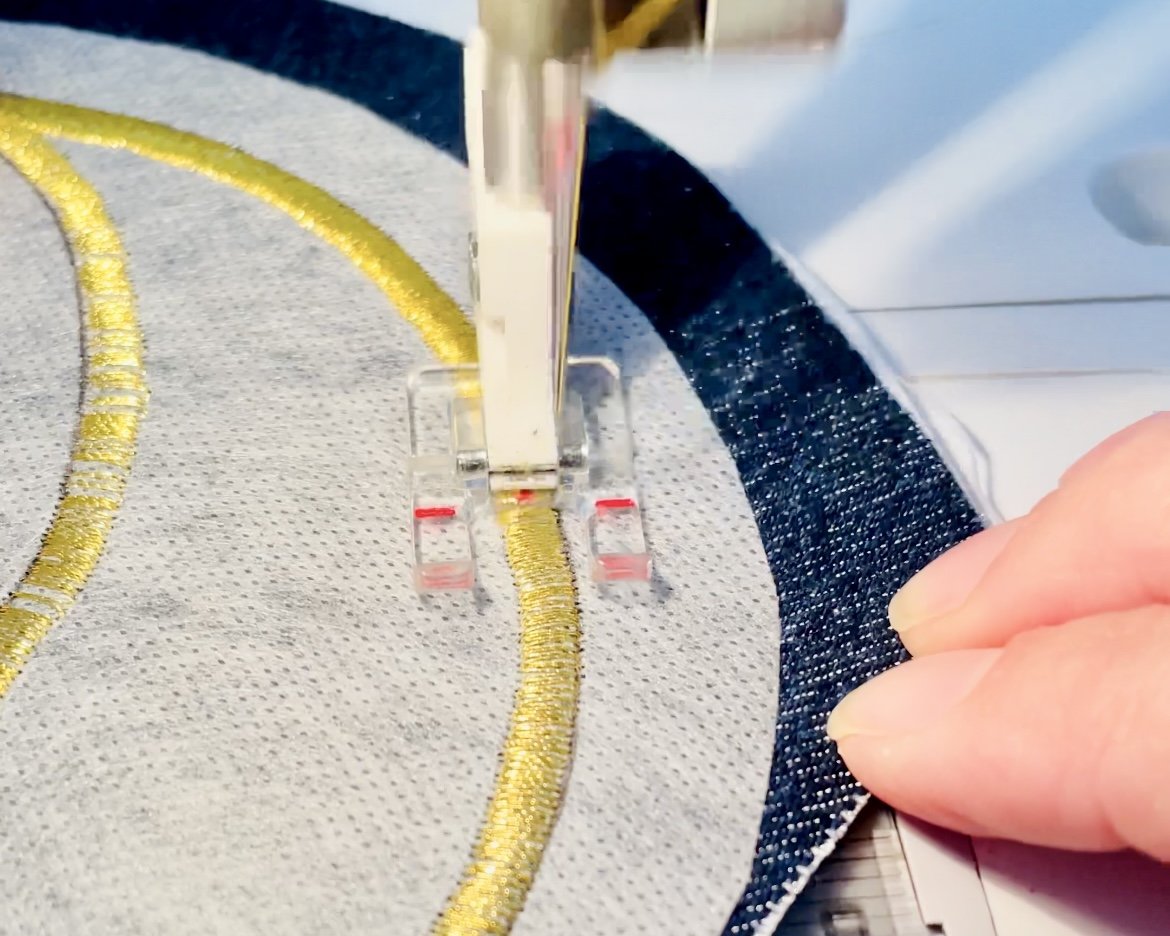HOW TO: Make Upcycled Iron-On Patches
On a whim on day I created custom monogrammed iron-on patches for my husband’s niece. I asked my daughter if she would like some and requested a moon and a star in gold thread. I decided to teach you how to make them using your sewing machine! They are a quick and simple way to add style to clothing, backpacks, bags and more! You can make any design you’d like and add a monogram to personalize.
I free motioned embroidered these used my regular home sewing machine to make these. Therefore, this is how I will be demonstrating and explaining it to you.
Lets get started!
Watch a step-by-step video or keep reading!
SUPPLIES YOU’LL NEED
There are several key supplies to ensuring a beautiful embroidery. The last thing you want is to finish your hard work and see puckers and skipped stitches. It can save you hours of frustration!
Here is what you need, affiliate links are provided for your convenience (and they help out my family and I):
Any kind of regular machine should work as long as you have a satin stitch and/or zig zag stitch.
You will need these for the backing interfacing.
These needles are designed to work with specialty embroidery threads. They have a special scarf shape that guards against friction, allowing for trouble-free embroidery.
An embroidery presser foot will give you the best visibility to see where you’re stitching.
Use a sewing machine embroidery for it has a beautiful sheen unlike regular thread.
You’ll need scissors to cut the interfacing and stabilizer. It’s best to have one pair for cutting fabrics and one for cutting paper.
This is what you use to transfer your design on to. I use a printable one since I do my designing on the computer.
This is what you use to turn fabric into the iron-on patch.
I use a medium weight, iron on interfacing. It gives structure to the fabric which protects against puckering.
A lighter weight interfacing can be used in conjunction with an embroidery hoop.
This will hold your fabric taught and prevent puckering.
THE DESIGN
Create the Design
Both free hand drawings and computer print outs work great. I do all my designs on Adobe InDesign or Microsoft Word. I like to just use an outline for the design rather than a filled in one.
I also call this the “stitching guide lines”. These lines are where the needle needs to when when embroidering.
Transfer Design
Whether you choose to free hand draw or print from a computer, the design needs to be put on to the water soluble, stabilizer paper.
Trim Design
Cut around the designing leaving about .5 inches space on all sides.
Your design is ready!
PREPARING THE FABRIC
Pick Your Fabric
What is the design going on? Any type of fabric should work as long as you follow my steps.
I am putting it on a piece of scrap from a pair of jeans.
Iron on Interfacing
Cut a piece of interfacing about double the size of the design. This ensures you wont accidently be stitching off the edge of it.
Note: if you are using a light colored or thin piece of fabric that the interfacing may be seen then I would recommend cutting the interfacing to match the exact shape of the design. It’s more appealing to the eye that way. This is also where I may switch to a lighter weight interfacing and use an embroidery hoop instead.
Iron onto the back side of the fabric. Follow the directions provided with your interfacing to properly adhere it.
Peel the backing off the paper
This paper has a self-adhesive backing to ensure your design stays in place.
Placement
Stick the design on to the fabric where you would like it to be stitched.
Done!
Your design and fabric should look like this.
Your fabric is ready!
SETTING UP THE MACHINE
The design is now ready to be stitched but first lets get the machine ready!
Switch to an Embroidery Needle
These needles are designed to work with specialty embroidery threads and have a special scarf shape that guards against friction, allowing for trouble-free embroidery. If you choose to not use embroidery thread than you can get away with a universal needle, if the thread keeps breaking then try a heavier size like a jean or topstitching needle.
Switch to an Embroidery Presser Foot
I highly recommend using this presser foot. It gives you clear visibility of the stitches. If you don’t have one, you can use a regular foot it just might not give you clean line. Go slow and lift your presser foot often to see exactly where your stitch lines are.
Thread Your Machine with Embroidery Thread
This thread has a special sheen to it which regular thread does not have. You can do regular thread but the sheen of the embroidery thread gives a subtle pop and draws your eye much more than the regular would.
Pick Your Stitch
If your machine has a satin stitch than that is the one to use. If it does not a zig zag stitch will give you the same look. Just set the stitch distance to about a .4mm.
Your machine is ready!
EMBROIDERING
You’re ready to stitch! Now it’s time to start figuring out your “stitching strategy.” This is what I call the plan for each design. For example, a circle design would require a very different strategy than a star design with several points and curves. I study where I will start, whether it has straight or curved sections and if I will need to change the stitch width to increase or decrease at points.
Here are a few notes to keep in mind:
My machine is digital and has a satin stitch, therefore, that is how I am showing you. The zig zag stitch work as well as long as your stitching distance is set to about a .4mm
I am working on the moon design so that is what I am referencing to.
I will be referring to the printed design as the “stitching guide lines”
I use a heavier interfacing instead of using an embroidery hoop. Because I upcycle, a lot of the time my fabric pieces are too small to fit in an embroidery machine. If that happens to you and you want to use an embroidery hoop here what you can do: find a piece of fabric large enough to fit in the hoop and on the outside edge, sew your piece onto the larger piece of fabric using a larger stitch so you can easily remove it when your done. When you’re finished embroidering, take the stitches out and trim the larger piece of fabric leaving about 1/8 in. around the stitching. You don’t want to see that fabric from the front. I would most likely use one if I was embroidering on a light weight fabric.
The Start
I like to start at the bottom of the design. This is basically one continueous loop so you can really start anywhere. You want your stitches to hit the stitching guide lines on the paper. For the outside of this design any stitch 4.5-6mm will work.
Choose a Stitch Width
I am starting with a 4.5mm stitch width. This will be the largest stitch width. For the points of this design I will decrease my widths.
CONTINUE STITCHING
Keep stitching while slowly pivoting the fabric using the same stitch width until you get to a section that requires either increasing or decreasing your stitch width. This section tapers, therefore, I will be decreasing the stitch width.
INCREASING/DECREASING SECTIONS:
Stitch
When you notice you’re just shy of the line then it is time to decrease the stitch width.
Decrease
Decrease only .5mm at a time for the smoothest transition, 4.5-4mm
Stitch
Continue to stitch a few more stitches and making sure your needle is hitting the stitching guide lines.
Decrease
Increase another .5mm, 4-3.5mm.
Stitch
Stitch a few more stitches, sometimes it may only be about 1-2 stitches. You have to a little guess work on how many stitches per decrease it will take to get to the end. Practice helps!
Decrease
Decrease another .5mm, 3.5-3mm.
Stitch
Keep going, stitch a few more stitches and making sure your needle is hitting the stitching guide lines.
Decrease
Decrease another .5mm, 3-2.5mm.
Stitch
You’re almost there! Continue to stitch a few more stitches and making sure your needle is hitting the stitching guide lines.
Decrease
Increase another .5mm, 2.5-2mm.
Stitch
You made it! Do the last few stitches until the end.
Decrease
Increase another .5mm, 2-1.5mm.
Turn Around
When you get to the end, leave the needle in the fabric, lift the presser foot, turn the fabric around, put the presser foot down and stitch. Repeat the previous steps but in reverse, increasing the stitch width instead of decreasing.
Stitch
Stitch until you get to the end of the design/start of the stitching.
Second Layer
Go over the original layer again copying all the steps.
Removing the Threads
With a hand stitching needle, pull the loose threads to the back side of the fabric, double knot and cut leaving about .5 in of thread.
Your stitching is finished!
FINISHING
Pull Off the Paper
Peel all around the design and anywhere there are large sections of paper.
Cut Off the Excess Paper
Please be careful to not cut any threads!
The Look
Here is how it should look once all the excess paper is removed.
Soak or Run Under Water
To remove the rest of the water soluble stabilizer. You can either soak it in a bowl for a few minutes or run it under the faucet. Either way you may need to gently rub your fingers over the loose paper.
Air Dry
Let it air dry.
Iron
Iron to get out any wrinkles.
ADHESIVED PAPER
Trace & Cut
Lay your fabric on top of the adhesive paper, trace the outline of it and cut along the outline.
Iron
Iron the adhesive paper to the back of the fabric.
Note: follow the ironing directions that come with your adhesive paper.
Peel Off Paper
Peel off the paper backing from the fabric.
The Look
It should look like this on the back side.
THE FINALE
Cut
Cut around the outside of the design about 1/16-1/8 inches from the stitching.
You’re finished!
Customize
Create any shape and add monograms to customize it any way you want!
USING THE PATCHES
Pick Where It’s Going
Put it on anything you’d like! A backpack, duffle bag leg of sweatpants or a jean jacket to name a few.
This is my toddler’s jean shirt.
Placement
Decide where you would like the patch to be permanently placed.
Iron
Use a damp cloth to iron on the front side for about 45 seconds.
Iron on the Back
With the damp cloth, iron on the backside for about an additional 30 seconds.
You’re patch is now part of a new piece and is ready to be shown off!
THE RESULTS
THANK YOU!
Subscribe to my newsletters to keep update to date on the latest tutorials and more!
For a more in-depth tutorial on free hand motion embroidery check out my other tutorial!


